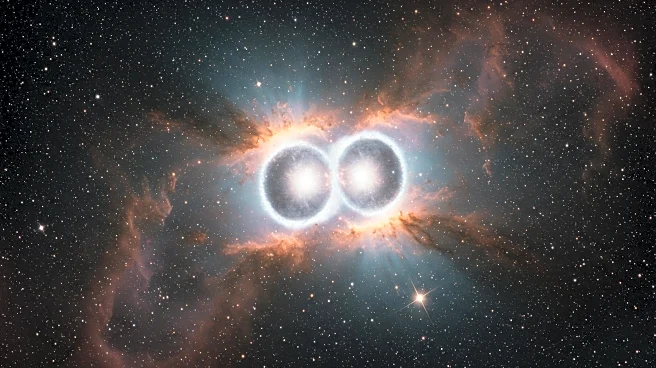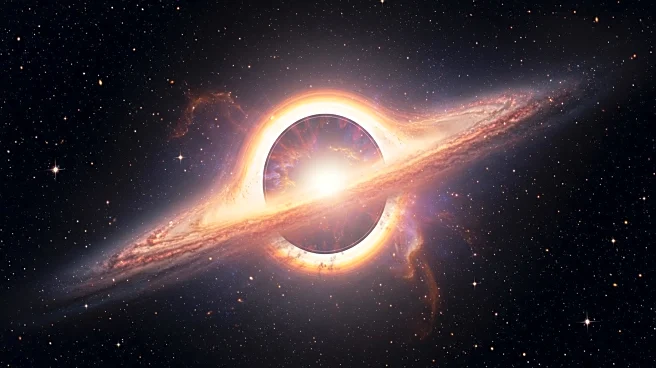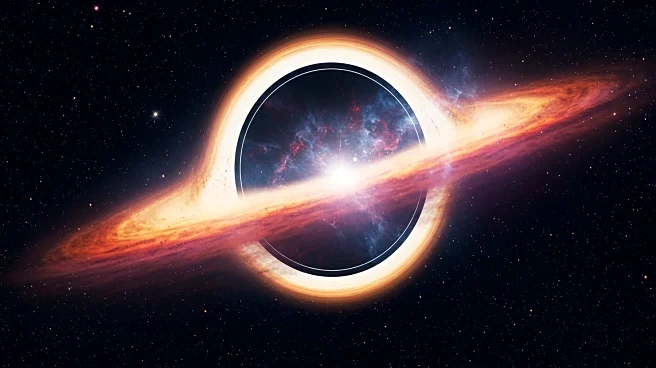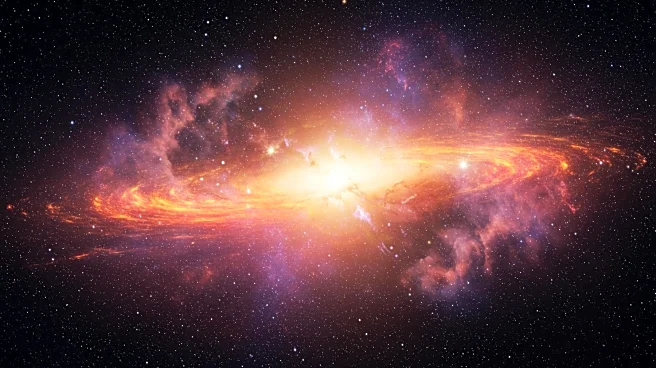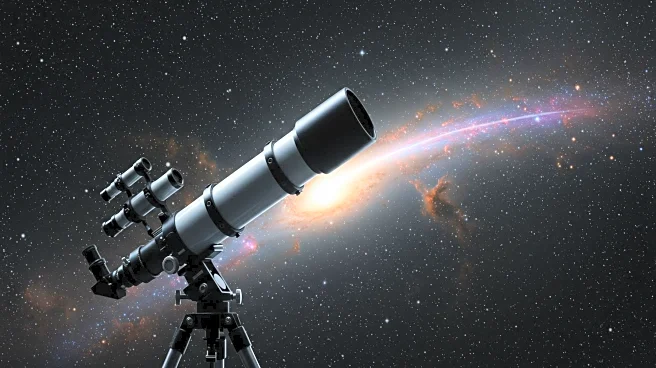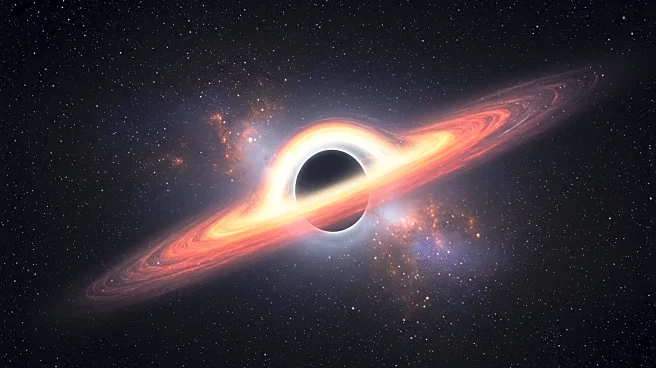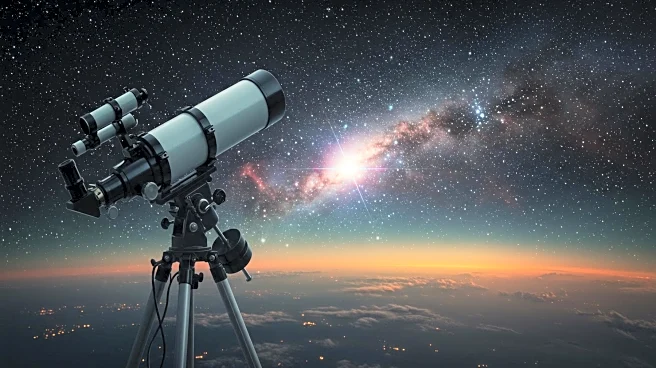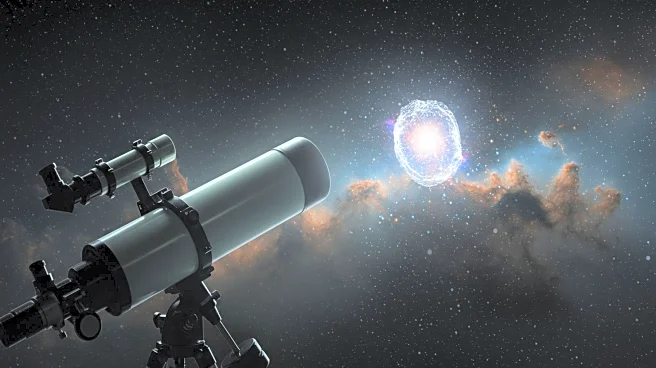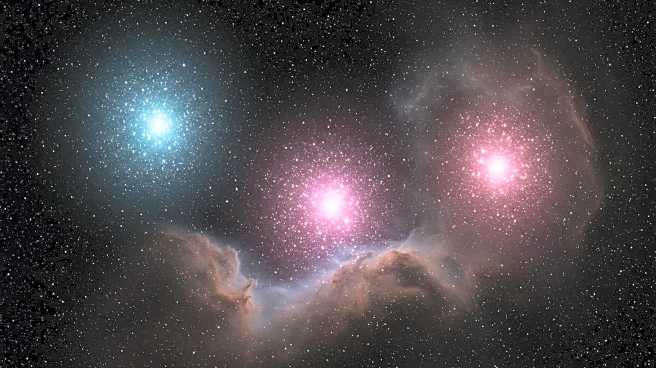What is the story about?
What's Happening?
Astronomers utilizing the Hubble Space Telescope have uncovered that a seemingly ordinary white dwarf star, named WD 0525+526, is actually the product of a dramatic stellar merger. This discovery, led by Snehalata Sahu and Boris Gaensicke from the University of Warwick, suggests that other white dwarfs across the universe may also have violent pasts. The star, located approximately 128 light-years from Earth, initially appeared standard through visible light observations. However, further analysis using Hubble's ultraviolet instruments revealed unusual carbon levels in its atmosphere, indicating a turbulent origin. Typically, white dwarfs form from the predictable evolution of single stars, but WD 0525+526 seems to have emerged from the collision and merger of two stars. This event stripped away the star's outer layers, exposing its carbon core, a phenomenon detectable in ultraviolet wavelengths.
Why It's Important?
The discovery of WD 0525+526's merger origin challenges the conventional understanding of white dwarf formation, suggesting that many such stars may have explosive histories. This revelation has significant implications for astrophysics, particularly in understanding stellar evolution and the pathways to supernova explosions. By identifying more white dwarfs with similar origins, researchers can gain insights into the frequency of stellar mergers and their role in the universe's lifecycle. This knowledge could refine models of star formation and death, impacting theories about the future of stars like our sun. The study also highlights the importance of ultraviolet observations in revealing hidden aspects of celestial objects.
What's Next?
Researchers aim to extend their study to determine how common carbon-rich white dwarfs are among similar stars and to identify more merger remnants. This could lead to a broader understanding of white dwarf binaries and their potential to become supernovae. The findings may prompt further investigations using ultraviolet telescopes to uncover more stars with hidden explosive origins. Such research could contribute to a deeper comprehension of the universe's stellar dynamics and the processes leading to cosmic events.
Beyond the Headlines
The discovery of WD 0525+526's merger origin raises questions about the ethical considerations of scientific exploration and the potential for unforeseen consequences in understanding cosmic phenomena. It underscores the importance of continually questioning assumptions in science and the need for advanced technology to uncover hidden truths. This event may also inspire cultural reflections on the nature of the universe and humanity's place within it.
AI Generated Content
Do you find this article useful?
